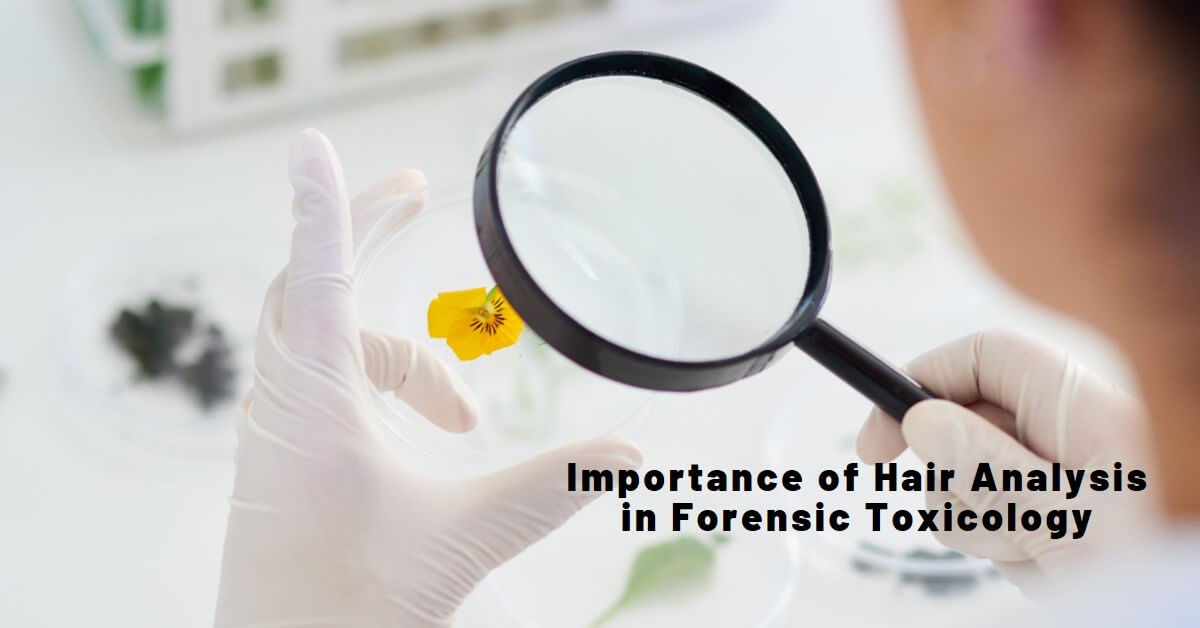The world of forensic science is complex; within it, human hair plays a unique role as a silent narrator. It holds a chronological record of the substances an individual has been exposed to, making it a valuable tool in forensic toxicology.
Hair analysis relies on the slow growth of hair, which incorporates substances from the bloodstream. This allows forensic scientists to create a timeline of drug use, environmental toxin exposure, and even intentional poisoning. The process involves careful collection, washing, and segmentation of hair, followed by advanced analytical techniques like GC-MS and LC-MS for substance identification and quantification.
As we delve into the applications of hair analysis in monitoring drug abuse, assessing environmental exposure, and investigating poisonings, we must also acknowledge the challenges it faces. These include the potential for external contamination and variations in hair growth rates.
However, despite these limitations, hair analysis is constantly evolving and improving its capabilities, offering a captivating glimpse into the past through the seemingly ordinary strands of human hair.
Principles of Hair Analysis
Hair, a fascinating biological structure, has the remarkable ability to grow at an average rate of approximately 1 cm every month. As it grows, it captures substances from our bloodstream, creating a unique timeline of our exposure to different compounds.
To unlock this valuable information, hair analysis involves extracting these substances from the hair and then using advanced analytical techniques to identify and measure them accurately.
Collection and Preparation
The initial stage of hair analysis involves gathering an appropriate hair sample. It is best to collect the sample from the scalp to ensure a uniform growth pattern. Once collected, the sample is carefully washed to eliminate any external impurities like dust, oils, and pollutants from the surroundings. After drying, the hair is cut into smaller sections, enabling a chronological examination of substance exposure.
Analytical Techniques for Hair Analysis
Hair analysis in forensic toxicology relies heavily on advanced analytical techniques that can uncover the complex network of substances present in hair strands. The pursuit of accuracy and specificity has led to the implementation of sophisticated methods, each playing a vital role in identifying and measuring the substances found in this distinctive biological matrix.
- Gas Chromatography-Mass Spectrometry (GC-MS): GC-MS, a trusted technique in the field of analytical chemistry, is widely used for hair analysis. This method effectively separates substances by their vaporization properties using gas chromatography, and then identifies and measures them through mass spectrometry. GC-MS is especially ideal for volatile and semi-volatile compounds, providing exceptional sensitivity and specificity.
- Liquid Chromatography-Mass Spectrometry: LC-MS, also known as Liquid Chromatography-Mass Spectrometry, is a highly versatile technique that plays a crucial role in detecting various substances, both polar and non-volatile. This method involves liquid chromatography to separate the analytes, while mass spectrometry identifies and quantifies them. By expanding the range of detectable compounds, LC-MS complements GC-MS and offers a more comprehensive analysis.
- High-Performance Liquid Chromatography: HPLC, also known as High-Performance Liquid Chromatography, is a powerful technique that can be combined with mass spectrometry (HPLC-MS) to separate and measure substances based on their interaction with a liquid mobile phase. It is especially beneficial for analyzing compounds that are non-volatile and thermally unstable, thereby enhancing the analytical capabilities of hair analysis.
- Inductively Coupled Plasma Mass Spectrometry (ICP-MS): ICP-MS is an essential tool when it comes to heavy metal exposure cases. This technique is highly proficient in identifying trace levels of elements such as lead, mercury, and arsenic. It plays a vital role in investigating environmental toxin exposure, enabling forensic scientists to establish connections between specific elements and potential health risks.
- Enzyme-Linked Immunosorbent Assay (ELISA): ELISA is not commonly used in hair analysis, but it is sometimes used for its fast screening abilities. This immunological technique uses antibodies to detect specific substances, giving a quick overview before further analysis with other methods.
- Multidimensional Chromatography: Multidimensional chromatography utilizes multiple chromatographic columns to enhance separation capabilities. This method proves especially beneficial when dealing with intricate samples, as it enables improved resolution and specificity in identifying substances.
Applications in Forensic Investigations
Hair analysis has diverse applications in forensic toxicology:
- Drug Abuse Monitoring: Hair analysis is an incredibly useful tool that can provide valuable insights into a person’s drug use history over a long period of time. This information holds immense value in various areas such as criminal investigations, probation monitoring, and even child custody cases.
- Exposure to Environmental Toxins: Hair analysis is a powerful tool that can detect the presence of environmental pollutants like heavy metals. This enables investigators to establish a direct connection between health problems and particular environmental exposures.
- Poisoning Investigations: Hair analysis can play a vital role in suspected poisoning cases as it can uncover the existence of harmful substances that may not be easily detectable using alternative methods.
- Timeline of Substance Use: Forensic scientists can reconstruct events in criminal investigations by utilizing the sequential nature of hair growth, which enables them to create a timeline of substance use.
Challenges and Limitations
Hair analysis in forensic toxicology has undoubtedly emerged as a valuable and enlightening tool. However, it is crucial to acknowledge that it comes with its fair share of obstacles and limitations.
For forensic scientists and investigators to accurately interpret results and derive significant conclusions, it is imperative to comprehend and address these complexities.
In this article, we explore the intricate facets that contribute to the challenges linked with hair analysis.
- External Contamination: One of the main difficulties we face is the possibility of external substances affecting the accuracy of hair analysis results. Elements like dust, cosmetics, or pollutants in the air can stick to the surface of the hair and be wrongly interpreted as internal exposure. It is crucial to have strict protocols for collecting and cleaning the hair samples to minimize this risk. However, completely eliminating external contamination still poses a challenge.
- Variability in Hair Growth Rates: Different individuals have varying rates of hair growth, which adds complexity when trying to determine the exact timeline of substance exposure. Although the average hair growth rate is approximately 1 cm per month, this can differ greatly among individuals due to factors such as age, genetics, and overall health. It is important to carefully consider these variations when interpreting results.
- Limited Detection Window: Hair analysis is a valuable tool for tracking substance incorporation over time, although it cannot determine the exact moment of ingestion. Unlike blood or urine tests, which have a limited detection window, hair analysis can provide information spanning months or even years. However, it cannot conclusively link the presence of substances to specific events or incidents.
- Influence of Hair Treatments: Chemical hair treatments like dyes, bleaches, and perms have the potential to affect the structure of the hair. These treatments can change the hair’s composition, which may result in skewed analysis outcomes. It’s important to take into account an individual’s hair treatment history and how it could impact the interpretation of the results.
- Population Differences: The diversity in hair structure and composition across various populations can make it challenging to establish standardized reference ranges. Ethnicity and hair color are some of the factors that can affect how certain substances are absorbed and retained, which means we need to be cautious when interpreting results in different demographics.
- Lack of Standardization: Despite the progress made in analytical techniques, the absence of standardized procedures and reference materials presents a hurdle in maintaining consistency among various laboratories. Differences in sample processing, analytical methods, and reporting criteria can impact the dependability and comparability of findings.
- Limited Understanding of Incorporation Mechanisms: The complete understanding of how substances are incorporated into hair is still not known. The deposition of substances can be influenced by factors like blood flow, melanin content, and the individual’s metabolic rate, which can introduce uncertainties when interpreting results.
Conclusion
Hair analysis has come a long way in forensic toxicology, becoming an invaluable tool that sheds light on a person’s drug and toxin exposure. By offering a retrospective timeline of substance use, it plays a crucial role in criminal investigations.
However, it’s important to acknowledge the limitations of this forensic technique and utilize other methods to ensure a thorough and precise analysis. With the continuous advancements in technology, hair analysis is poised to make even greater contributions to unraveling mysteries in forensic science.






